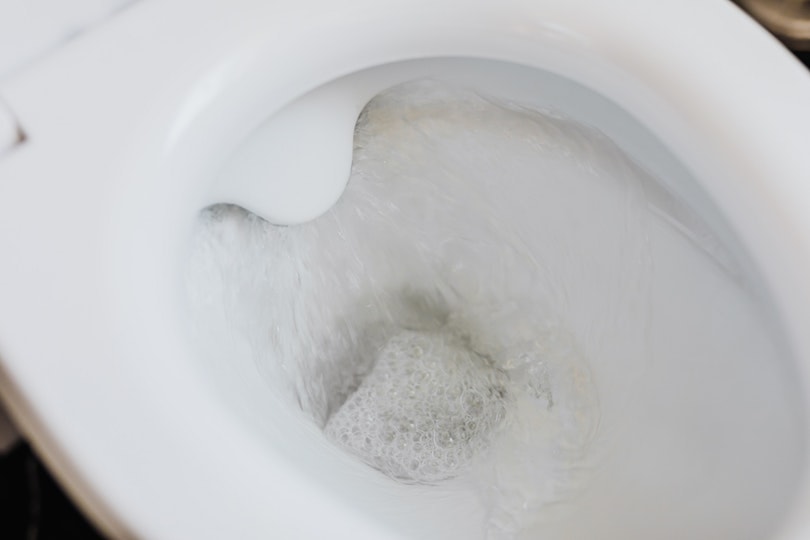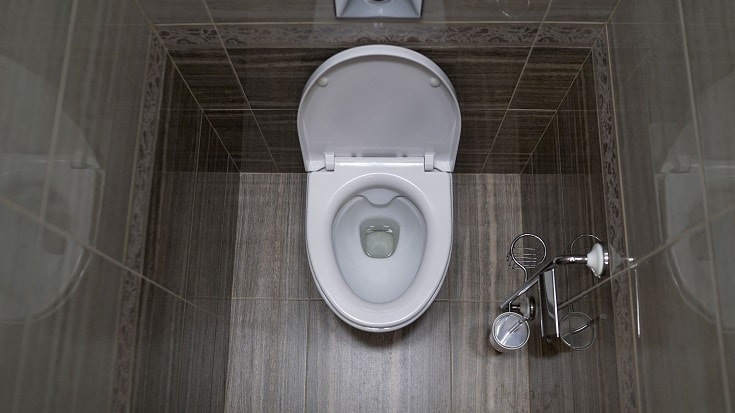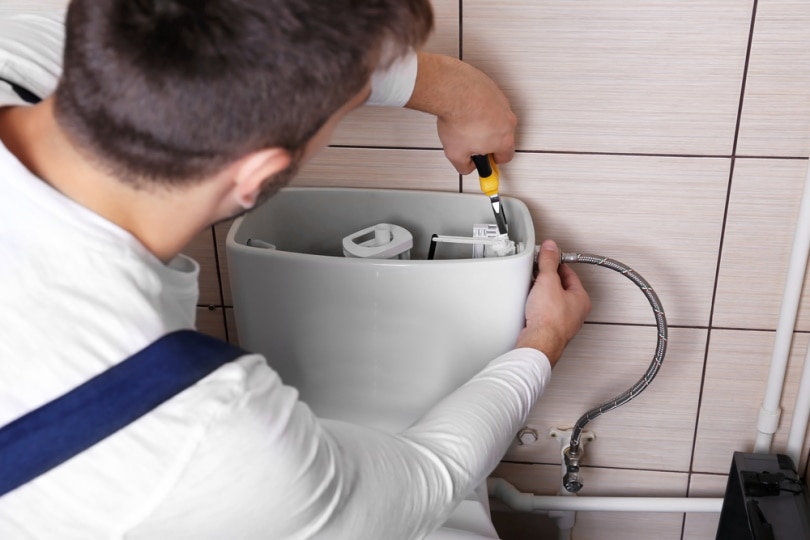Do Toilets Actually Flush Backwards in Australia? Myths, Reasons & FAQ
-
Pete Ortiz
- Last updated:

Arguably one of the funniest and most informative moments of The Simpsons animated series was Bart Simpson attempting to prove to his sister Lisa that water flows in opposite directions in the Southern and Northern Hemispheres. Bart attributed this phenomenon to the Coriolis Effect, a force that causes winds to flow in one direction. The winds could either flow north of the equator or south of it.
Similarly, this effect is also briefly mentioned in a scene played out in the movie Escape Plan (2013), played by Sylvester Stallone. In this movie, the main character Breslin tries to determine the location of a prison ship in which he is trapped by investigating the path of water as it pours down a drain. While explaining to his dumbfounded fellow inmates, he mentions, “Water flows clockwise above the equator.”
So, this begs the question. Is it possible to use a flushing toilet to determine whether you are in the Northern or Southern Hemisphere? Does the water in Australia flush backward? It’s about time we put this question to bed once and for all.
Contrary to popular misconception, the answer is no! Toilets in Australia do not flush backward. This misconception has circulated over the years, partly because of the Coriolis Effect. The only real cause of “backward” flushing is brought on by the shape of the toilet basin and the direction of the water jets. Read on to know more about the drain direction myth and what actually influences the direction that water drains in Australian toilets and sinks.
 Origin of the Drain-Direction Myth
Origin of the Drain-Direction Myth

To better understand how the drain-direction myth originated, we will discuss a documentary titled Pole to Pole by Michael Palin. This documentary will also help you understand why the myth has gained traction in society over the last century.
In his documentary video, Palin visits Kenya where he observes a tourist trap where a man supposedly demonstrates how water drains in varying ways on the equator. Even though the video’s authenticity might be in question, Palin doesn’t outright mention that the video is fake. He also fails to mention that the act was performed in a bid to impress tourists visiting the equatorial region for the first time. Even looking at the performance, a few meteorology experts might have known it was a fake but could not spot how the trick was performed.
However, the appealing demonstration of science that Earth’s rotation would cause such change in draining water appears as legitimate as it can be. This is where most people picked up the notion that toilets in Australia drain differently than those on the equator or the North Pole. The notion has stuck for many years now.
The Coriolis Effect
The Coriolis Effect was first observed in 1835. Since then, many great thinkers have been trying to figure out if the phenomenon affects different facets of life and, more particularly, toilets in the Southern Hemisphere.
It is generally known that the Earth rotates from east to west. Due to the Coriolis Effect, giant storm systems, such as hurricanes, move counterclockwise in the Northern Hemisphere, and clockwise in the Southern Hemisphere.
According to a Meteorology professor, the Coriolis force makes the air rotate around a low-pressure center in a cyclonic direction. The term “cyclonic” means that the fluid, whether water or air, rotates in the same direction as the planet. In addition, it means that the fluids rotate because the earth is rotating as well.
- The air flowing next to a hurricane will spin counterclockwise in the Northern Hemisphere but clockwise in the Southern Hemisphere.
- If, for instance, the Earth did not rotate, the air would directly flow toward the low-pressure area. But on a rotating Earth, the Coriolis force will cause the air to travel around the low-pressure area.
Therefore, in theory, draining water in a toilet or a bathtub—any vessel really—should have a similar effect. As you may have gathered, the Coriolis Effect works on a larger scale. However, on a smaller scale, like in drains and toilets, the planet’s rotation is weaker than other extraneous forces.
What Actually Influences the Direction That Water Drains in Australia?

So, the Coriolis Effect has a significantly larger impact on a larger scale, but toilet water is small scale. So, what accounts for the varying ways that toilets flush and drain?
The only real cause of backward-flushing toilets is the design of the equipment that does the flushing and draining. Lavatory debris and build-up also affect the shape water take as it drains through the pipes. The shape of the toilet basin also affects the direction of water jets in your toilet bowl flush. Even in an upscale toilet that has a perfectly symmetrical drain, the circulation will be affected by any residual currents in the toilet left over from when it was last filled.
Some basin designs allow water to flow in one direction while others prefer the opposite direction. You can even manipulate the direction of water using your hands. Though, that’s probably very unhygienic.
But the bottom line is, even though Australia is in the Southern Hemisphere, it will not have any effect on the flush direction of their toilets. If all the external influences are reduced to a certain level, a toilet will drain in different directions.
 Final Verdict
Final Verdict
Many people believe that toilets flush backward in Southern Hemisphere countries like Australia. However, this is a common misconception that arose partly due to the Coriolis Effect discovered in 1835. The Coriolis force can impact hurricanes, winds, and weather patterns. It causes ocean surface currents to flow in opposite directions in the Northern and Southern Hemispheres. This is perhaps what started the common idea of back-flushing toilets in the first place.
However, the Coriolis Effect cannot influence movements such as the direction of water flushes in a sink or a toilet. This is because other forms of energy in the environment, such as debris, overpower the weak Coriolis force. Therefore, in a toilet, the water jet angles and the shape of the bowl will control the direction of the flush and not the Earth’s rotation.
Featured Image Credit: Karolina Grabowska, Pexels
Contents

 Origin of the Drain-Direction Myth
Origin of the Drain-Direction Myth